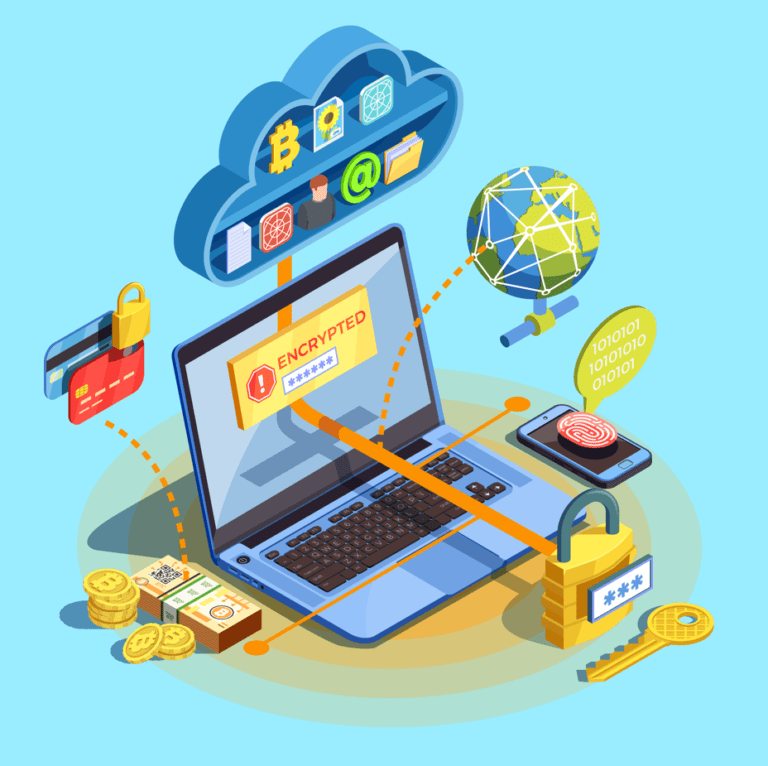Everything To Keep In Mind While Working On Financial Services Application
FinTech has become ubiquitous, with its presence seen in everyday activities like scanning a QR code at a grocery store, calculating EMI on a digital platform for a car purchase, or sending money through digital IMPS. At its core, FinTech is about leveraging technology to create an ecosystem that enables timely, convenient, and customer-centric financial transactions.
The financial industry can greatly benefit from automation and simplification of business processes through financial software development. This can remove unnecessary obstacles that employees often encounter in completing tasks.
In this article, we will explore how financial software facilitates the digitization of the fintech domain and enhances customer experience, leading many financial institutions to consider implementing such software in their operations to streamline their infrastructure and operations.
Why do you think it's still a good idea to invest money into developing Financial Software?#

Investing in unique financial application development is a smart option for company owners for various reasons.
Let's see a list of them.
1. Cash is turning digital#
If you are a Generation Z or Millennial member, you haven't used cash in the previous five transactions you've made. This is because you may have made the effortless switch to digital transactions without realizing it. This transition from cash to digital transactions is a critical factor in the development of the FinTech industry and the financial planning of individual firms within the sector.
2. The massive app space#
A massive rise in the number of companies joining the financial services market through mobile applications has been a substantial factor in the widespread acceptance of the FinTech business model.
These days, people prefer to retain their money, execute various financial activities, and monitor their past and future expenditures on their mobile devices. People's relationship with money has been revolutionized by mobile applications.
There are various best financial apps present in the market which have virtually replaced wallets.
3. Bank visits are becoming limited#
Customers rapidly escape conventional banking systems in favor of new banks and FinTech. Banks and NBFCs used to be the only options for financial services like lending and stock investments, but today people are turning to alternative financial service providers. Because of this shift, FinTech companies may now capitalize on the chance to provide new markets for clients unhappy with conventional financial services.
Cloud computing technology has been a prominent topic of discussion in the banking and FinTech industries for some time now. There are various benefits of cloud computing no matter in which sector you are working in.
4. Greater scope of innovation#
The FinTech sector continues to see new businesses addressing long-standing challenges, indicating that there is still ample room for innovation. Despite the availability of apps and software for outdated banking processes, new use cases keep emerging. For example, virtual currencies have become more profitable than traditional fiat money, which was unforeseen.
The potential for developing new models in FinTech appears limitless, with opportunities for continuous advancement.
Must-have Features for Financial Software Systems#
Before delving into this section, we would like to share a disclaimer. The characteristics of your Financial application software will be determined by the model you choose in the preceding section.
For instance, a payment app may support QR codes, while a cryptocurrency trading platform may provide real-time market data. Different models may provide vastly different sets of features.
In this section, we will outline the top features that typically make it to the list of most Financial apps.
Here are the details.
1. Secure authentication#
Authorization plays a critical role in every Financial application software, serving as the primary means of securing the application through various multi-factor authentication methods such as email verification, phone number verification, OTP-based registration, biometric authentication, and more.
This stage demonstrates to users how robust their experience will be, particularly when it comes to security measures. It showcases the tight integration of security measures within the application, instilling confidence in users' minds.
2. Model-specific functions#
These features will serve as the backbone of your service. For instance, Financial application software may include a section for managing recurring payments, account connections, a dashboard showing spending and revenue summaries, artificial intelligence-based tips on cutting costs, and other similar features.
On one hand, cloud computing technology has provided FinTech companies with the freedom to focus on their core activities while outsourcing tasks such as data center management and IT infrastructure. However, the stock trading Financial application will be designed with specific functionality in mind.
3. Payments#
Financial applications, whether they are B2B vendor management systems or lending platforms, often have payment processing features. Users rely on sending and receiving money safely and in real time inside the app.
The specific way in which this functionality is implemented may vary depending on the chosen model. Payment methods might range from in-app wallets to QR codes to direct bank transactions. The options for implementing this feature are many and may be customized to the specific needs of the FinTech application.
4. Dashboard#
A tracking and management system is essential for data-driven apps such as healthcare, fitness, and FinTech. This is where an in-app dashboard comes in handy. It consolidates income and expense data, market updates, upcoming transactions, and other relevant information in one easily digestible format.
Additionally, a dashboard feature typically includes the ability to generate and download reports, providing users with a more detailed view of their finances.
5. Notification#
Customized notifications are a crucial means of communication between a FinTech business and its customers. They are used to provide updates on credit or debit transactions, changes in investment rates, new offers, loan application status updates, and more.
It is essential to carefully plan out a strategy for sending notifications to ensure they are not intrusive or untimely. Finding the right balance between timing and relevance is crucial to ensure that notifications are well-received by users and enhance their overall experience with the best financial app.
6. Integrations#
Integration with third-party software is essential for the best financial app to provide maximum value to users. This typically includes integration with banking, security, notification, and payment software.
When adequately integrated using the appropriate APIs, users can benefit from easy checkout processes, finding the nearest bank location, and tracking their funds across different accounts.
This seamless integration allows for a more user-friendly experience and enhances the overall functionality and usefulness of the FinTech app.
On the other hand, it has also led to the emergence of new business models such as banking-as-a-service and open banking.
Conclusion#
More and more banks and other financial institutions today understand the value technology can bring to their efforts to expand their company and better serve their clients.
Furthermore, moving to cloud computing technology involves more than just a shift in how IT is owned and operated. In this way, financial institutions may reap the benefits of rapid innovation, increased agility, and massive size. Hence, there are many benefits of cloud computing.
Also, including various and unique features can help you make the best financial app that helps to ensure the safe, uninterrupted transmission of data, software, and services to customers.


